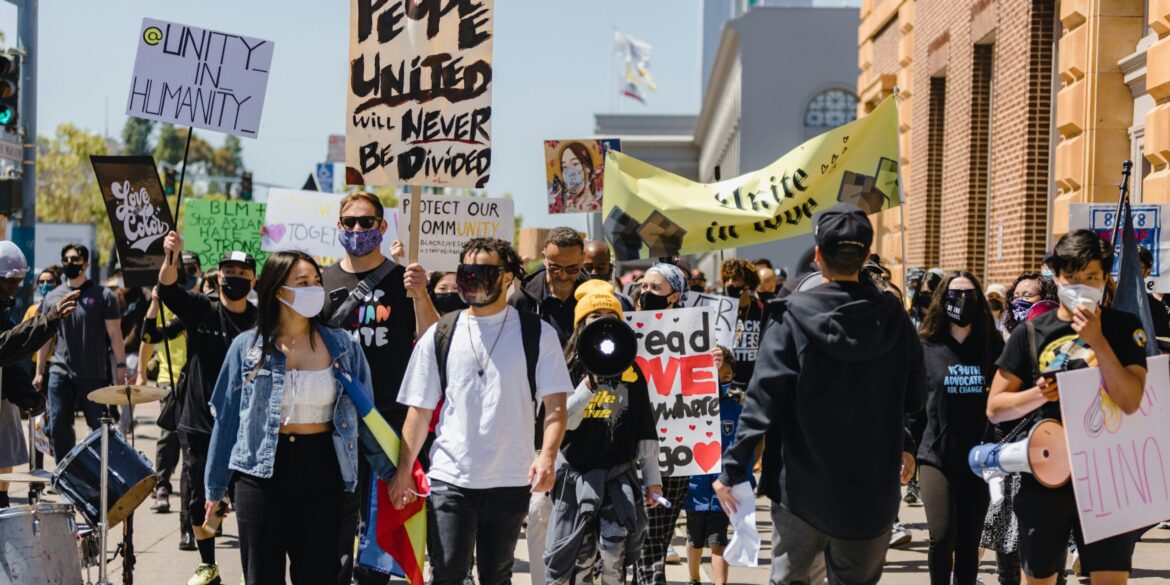The summer of 2025 has brought a renewed focus on immigration enforcement in Southern California, as a series of federal immigration raids led to widespread protests and legal challenges across the region. These events highlight the growing tension between state authorities and federal immigration policies, with local officials and community organizations pushing back against what they see as discriminatory actions that disproportionately affect immigrant communities.
The Raids and Their Impact
In early June 2025, Immigration and Customs Enforcement (ICE) agents conducted coordinated raids in several areas of Los Angeles, Santa Ana, and San Bernardino, resulting in the detention of over 200 individuals. These raids targeted businesses, including some in the fashion district and construction sector, where undocumented workers were believed to be employed. The raids also extended to residential neighborhoods, with ICE agents entering homes and detaining individuals without clear documentation, sparking outrage from immigrant advocacy groups.
Critics of the raids argue that they were carried out without proper respect for due process and that they disproportionately affected individuals who were working legally or had already established long-term lives in the United States. Many of those detained were law-abiding immigrants who had been living in Southern California for years and were active members of their communities.
Protests Erupt Across Southern California
In response to the raids, immigrant rights activists organized a series of protests in key cities across Southern California. In downtown Los Angeles, several thousand people gathered outside the ICE headquarters to demand an end to the raids and the release of detained individuals. The protests were peaceful but highly charged, with speakers emphasizing the familial impact of the raids and the psychological toll they took on the children and spouses of those detained.
Legal Challenges and State-Level Pushback
The protests against the raids have been met with strong support from local officials, particularly in California, where state law prohibits local law enforcement from assisting with federal immigration enforcement unless certain criteria are met. Governor Gavin Newsom expressed his opposition to the raids, stating that they violated the spirit of California’s sanctuary laws, which were designed to protect immigrants from federal immigration enforcement.
In response to the raids, a California-based civil rights group, the Immigrant Legal Resource Center (ILRC), filed a lawsuit against the U.S. Department of Homeland Security (DHS), arguing that the raids violated both California law and the constitutional rights of the individuals involved. The lawsuit seeks to block future raids in the state and demands that the federal government follow due process when conducting such operations.
The legal action is part of a broader effort by California to challenge federal immigration policies. In 2018, the state passed legislation known as SB 54, which effectively limits local law enforcement’s cooperation with ICE, making California one of the most immigrant-friendly states in the nation. The ongoing legal battle underscores the conflict between state and federal authorities over immigration enforcement and the rights of immigrants.
Federal Response and the Role of National Guard Troops
In addition to the raids, the federal government deployed National Guard troops to provide support for immigration operations in Southern California, particularly in high-traffic border areas like San Diego and Imperial County. This decision sparked even more controversy, as local officials criticized the move, arguing that it was an overreach of federal power. Mayor Eric Garcetti of Los Angeles issued a statement condemning the decision to send National Guard troops, calling it an attempt to militarize local law enforcement and undermine the rights of undocumented immigrants in the city.
The tension escalated when President Trump announced plans to expand the deployment of National Guard units in other major cities, including San Francisco and San Diego, as part of a broader strategy to curb illegal immigration. Critics argue that the federal government is infringing on the rights of sanctuary cities and creating unnecessary fear among immigrant communities.
Community Reactions and Support for Immigrants
In the face of federal actions, many Southern California communities have rallied around immigrants, offering legal support, financial assistance, and housing to those affected by the raids. Several grassroots organizations, such as La Defensa and CAIR California, have launched fundraising campaigns to help detained individuals with legal fees and provide bail for those awaiting court hearings.
Local businesses in immigrant-heavy communities have also voiced their support, with some even closing their doors in solidarity with the protests. In Santa Ana, a city with one of the largest immigrant populations in Orange County, shop owners and restaurant operators have joined in the protests, emphasizing the critical role immigrants play in the local economy.
Conclusion
The federal immigration raids in Southern California have sparked legal challenges, protests, and debates about the future of immigration policy in the United States. As the region grapples with these challenges, the outcome will likely have long-term implications for both immigration law and the relationship between federal and state governments. Southern California’s strong tradition of activism and advocacy will continue to play a critical role in shaping the direction of this national conversation.

